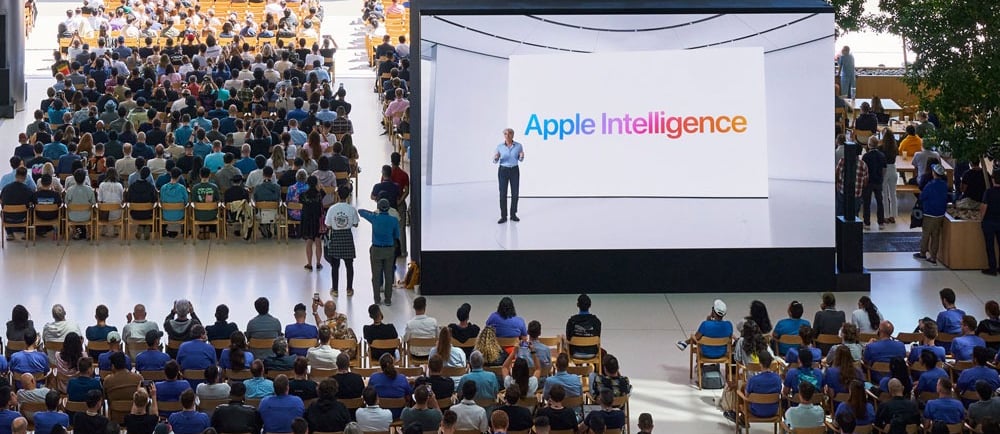Apple Intelligence Takes the Lead: What Microsoft Overlooked with Copilot
This blog compares Apple’s effective rollout of Apple Intelligence with Microsoft’s missteps in launching Copilot+, highlighting how Apple’s inclusive strategy and user engagement give it a competitive edge in the AI race.
12/11/20243 min read


Microsoft took the lead in bringing AI to consumer devices through its Copilot+ platform, integrating tools like OpenAI and ChatGPT. At first, this move seemed to give Microsoft a significant edge over competitors like Google and Apple. However, poor execution has led to confusion about Copilot+ and limited its adoption. There’s still no clear presence of AI-integrated desktop PCs, gaming PCs, or workstation PCs, creating uncertainty in the market.
In contrast, Apple and Google have used this gap to catch up. Apple’s Apple Intelligence initiative has started rolling out AI tools more broadly, allowing more users to engage with AI. Google, meanwhile, has incrementally introduced AI features, focusing on improving accessibility. Apple’s strategic decision to host in-store AI experience sessions has further boosted user engagement—a move neither Microsoft nor Google has matched.
This article explores Apple’s effective AI strategy and how Microsoft’s missteps have opened opportunities for competitors.
Why User Adoption Matters
People are creatures of habit and often stick to familiar routines. This makes it challenging for companies like Microsoft, which rely on users adopting new features to differentiate their products. For instance, Microsoft Office 365 and Windows offer extensive capabilities, but most users only utilize basic features.
This creates a risk: if users don’t explore and appreciate unique features, they can easily switch to simpler, cheaper alternatives like Google Workspace, especially during times of cost-cutting. For example, Microsoft’s Copilot+ introduced innovative tools like Cocreator and Recall, but the lack of awareness and engagement has limited its success.
Without proactive user education and engagement, even advanced products can lose ground to competitors.
Lessons from Internet Explorer
Microsoft has faced similar challenges before. In the early days of the internet, Microsoft defeated Netscape Navigator by offering Internet Explorer for free with Windows. However, after achieving market dominance, Microsoft reduced investments in IE. This opened the door for Google Chrome, which quickly became the leading browser.
A similar scenario is unfolding in the AI space. While Microsoft was first to market with Copilot+, its lack of follow-through and user engagement has given Apple and Google the chance to innovate and capture market share.
Microsoft’s AI Stumbles
Microsoft launched Copilot+ with two main features:
Cocreator, a local version of DALL-E for generating images.
Recall, a productivity tool designed to simplify workflows.
However, Recall was pulled back due to security concerns, leaving Cocreator as the sole feature. Compounding the issue, Copilot+ was restricted to devices with Snapdragon X processors, targeting users who prioritize portability over performance. These users are not typically early adopters of advanced AI tools, such as gamers or professionals who value cutting-edge technology.
This mismatch between the product and its target audience has made Copilot+ one of Microsoft’s weakest launches.
Apple’s Winning AI Strategy
Apple has adopted a broader, more inclusive approach to AI. Unlike Microsoft, which limited its AI tools to a niche user base, Apple is rolling out its AI tools across its entire ecosystem, from desktops to smartphones. Additionally, Apple’s in-store AI sessions allow users to try the technology firsthand, boosting familiarity and usage.
Even though Apple’s AI features may not yet be as advanced as Microsoft’s, its focus on user engagement ensures higher adoption. This makes Apple’s AI a stronger competitive differentiator. An unused feature, no matter how powerful, adds no value—Apple’s strategy makes sure its AI tools are both accessible and widely used.
What Lies Ahead
Microsoft’s early launch of Copilot+ should have given it a major competitive advantage. However, poor execution has allowed Apple and Google to close the gap and even surpass Microsoft in some areas. Apple’s user-focused rollout and Google’s incremental improvements have positioned both companies as leaders in the AI race.
For Microsoft to recover, it needs to make its AI tools accessible to all device categories and actively engage users. Until then, Apple and Google will continue to strengthen their hold on the AI market.
Product Spotlight: Google Pixel 9 Pro Fold
Among the latest tech innovations, the Google Pixel 9 Pro Fold stands out for its versatility and power. Key features include:
Enhanced Performance: While it doesn’t have a Qualcomm Snapdragon processor, Google’s custom chip delivers impressive speed and supports advanced features like head-mounted displays.
Long Battery Life: The phone can last all day, even with heavy reading or browsing.
Great Multimedia Experience: The Pixel 9 Pro Fold has a high-quality camera, decent sound, and works well for watching movies or reading on the go.
Portable and Practical: Its foldable design makes it ideal for multitasking, and it can even replace a laptop in some situations.
Priced at around $1,300, it’s an investment, but its capabilities make it a top choice for tech enthusiasts.
Final Thoughts
The AI race is heating up, and execution is becoming the key to success. Apple’s focus on accessibility and user education is setting the standard for AI adoption. Microsoft, despite being the first mover, has struggled with execution, creating opportunities for Apple and Google to lead.
Meanwhile, products like the Google Pixel 9 Pro Fold showcase how innovation and user-focused design can deliver exceptional experiences, proving that technology is only as valuable as the experience it provides to its users.
Location
Boston, US | Bangalore, IN
Hours
I-V 9:00-18:00
VI - VII Closed
